Spring is here, and so are Autodesk's 2022 products! One of those exciting new releases is Civil 3D 2022. Let's take a look at some of the cool new features that come with it.
1. Still the same DWG format and backward compatibility!
One of the biggest issues that organizations faced in the past when considering an upgrade to Civil 3D was the inability to share drawings with other companies/contractors that were using earlier versions. That issue varies depending on which versions were being used by each organization. Civil 3D 2022 extends the longest backwards compatibility and sharing streak in the product's history. Not only does Civil 3D 2022 still use the AutoCAD 2018 DWG version, its drawings can still be opened all the way back through the Civil 3D 2018 release!2. Enhanced Connected Alignment Functionality
Connected Alignments are powerful tools that can assist users with building intersections and interchanges. Civil 3D 2022 introduces some helpful additions to this functionality that will make these objects even more powerful. While the general workflow is still the same, the creation of Connected Alignments now includes the ability to automatically create an Alignment made up of compound curves and spirals, three-centered arcs, and more. After establishing a choice of geometry type, you can now set the Degree of Curvature as less than or greater than 180 and even establish an offset value from the original Alignments!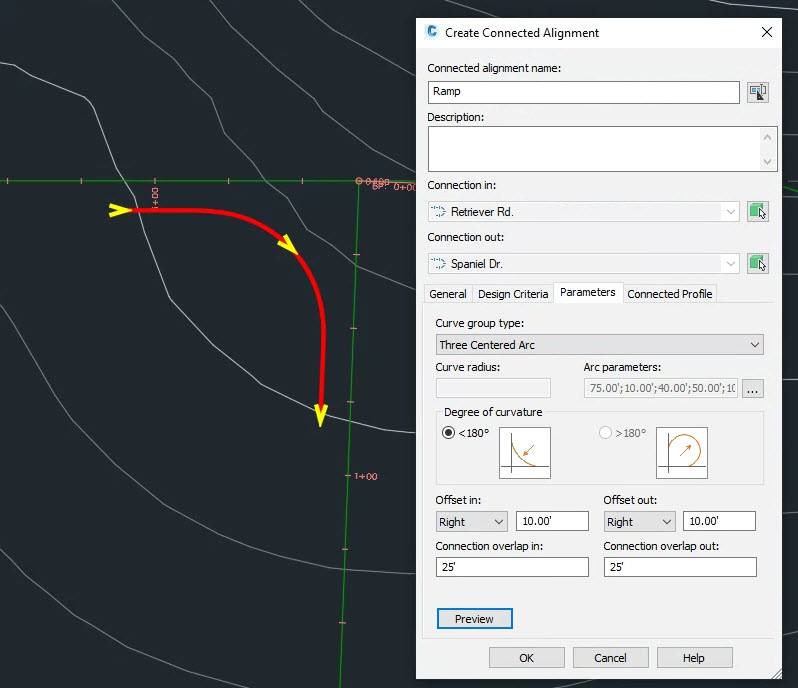 2022 Connected Alignment Dialog and Preview
2022 Connected Alignment Dialog and Preview
3. Grading Optimization
This is probably my favorite addition to Civil 3D in YEARS! For so long, many of us have been wanting some cool functionality that will allow us to set some engineering options and necessary parameters, then let the program grade a site for us. And now it's here! Civil 3D 2022 in the AEC Collection introduces a great new tool called Grading Optimization. With this functionality, the user can create separate grading zones with minimum and maximum grades; establish desired sizes and volumes for ponds; create drainage line locations, set options for balancing cut/fill and minimizing earthwork; and more. The program then runs an iterative process using optimization algorithms to find the best possible solution that will match the desired options. Once the solution is complete, it can be created as a Civil 3D Surface in the drawing with an option to create Feature Lines for key elements!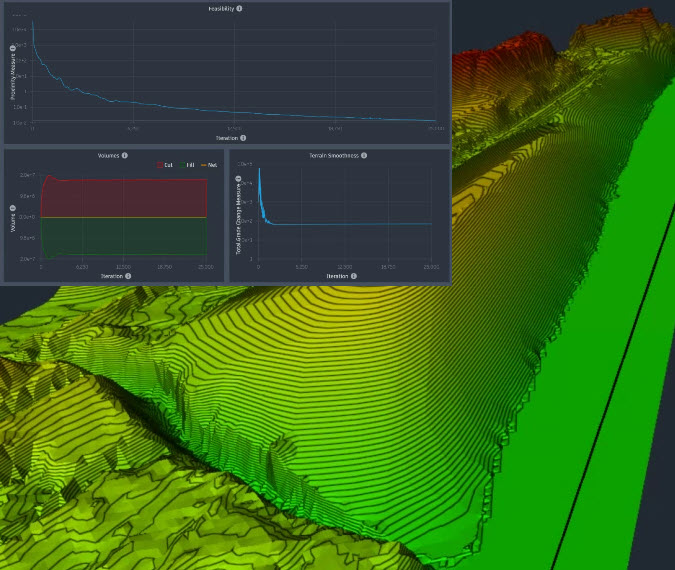 Grading Optimization Sample
Grading Optimization Sample
4. Project Explorer Updates
Originally released with Civil 3D 2021.1, Project Explorer allows users to manage the large amount of information and data in Civil 3D projects. It is a powerful tool for reviewing and even editing design information across the project in one, consolidated location. Project Explorer has been enhanced for 2022 and now includes functionality for working with Pressure Pipe Networks. Using tools similar to those that already exist for Gravity Pipe Networks, the Project explorer allows a user to review data associated with Pressure Networks, change settings such as Reference Alignments and Reference Surfaces, and edit design data all in one, easy-to-use dialogue.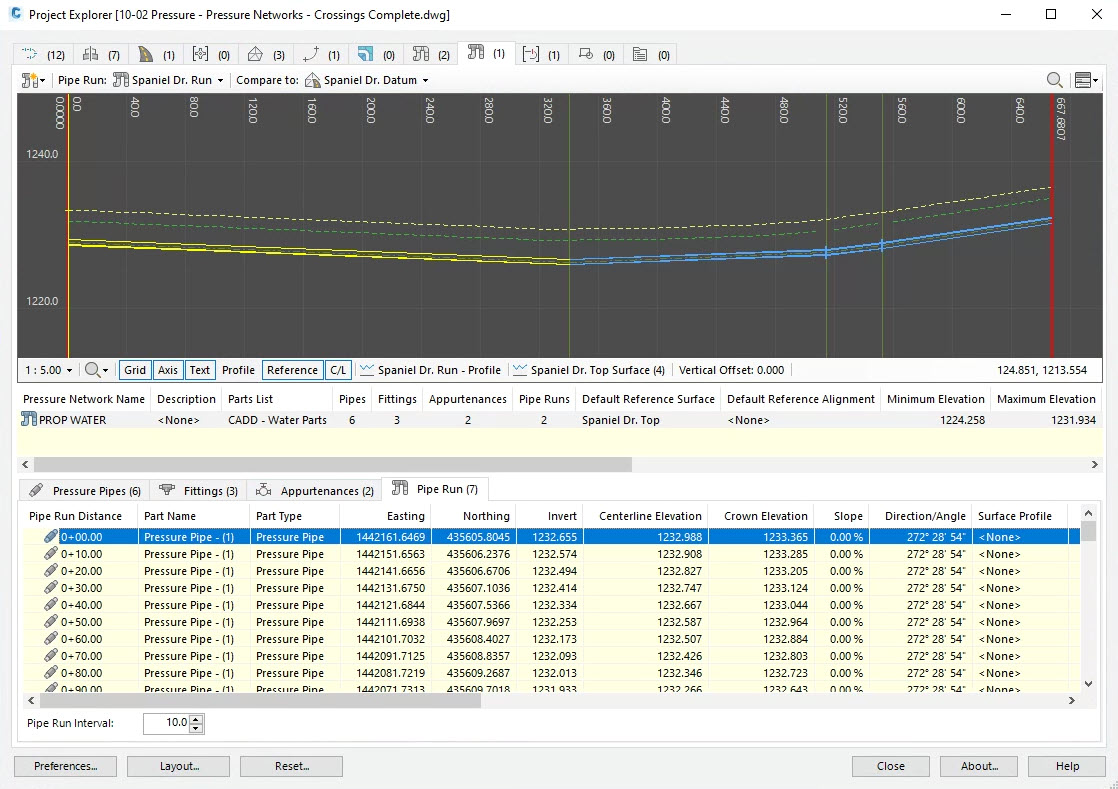 Pressure Networks in Project Explorer
Pressure Networks in Project Explorer
5. Pressure Network Improvements (2021.1 and 2021.2)
When the concept of Pipe Runs was introduced in Civil 3D 2021, many people started to rethink how they designed Pressure Networks in Civil 3D. However, there were some limitations for creating path-based networks vs. networks that you created using the traditional tools. Civil 3D 2022 contains all of the great functionality enhancements from 2021.1 and 2021.2, which included a number of improvements to how Pressure Networks, specifically path-based networks, are designed and edited in both Plan and Profile. Some of these enhancements include: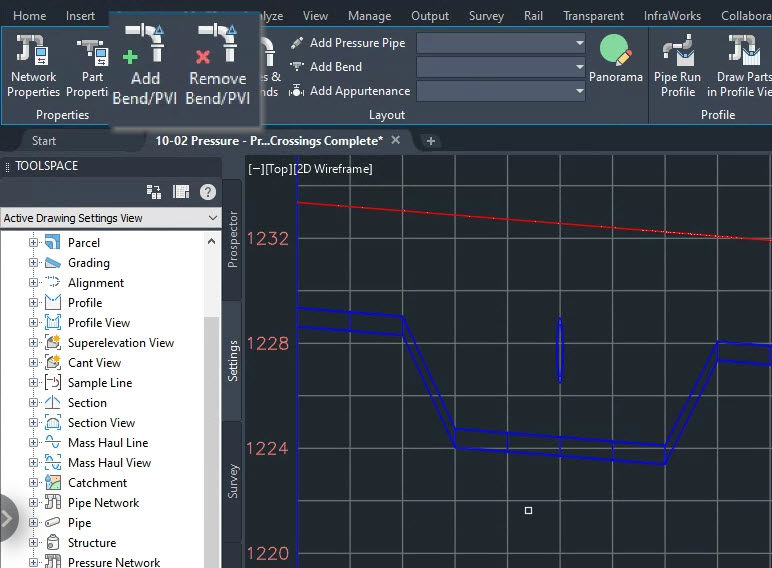 Add and Remove PVI functionality in Profile
Add and Remove PVI functionality in Profile
- The use of a compass for laying out path-based networks that will allow you to snap to specific bend angles.
- Fittings that will now automatically adjust and rotate as they are laid out and edited in Plan and Profile.
- Add and Remove functions for PVIs/Vertical Bends in Profile
- Grip editing capabilities that allow a straight pipe to be changed to a curved pipe and vice versa in Profile.
- And more!
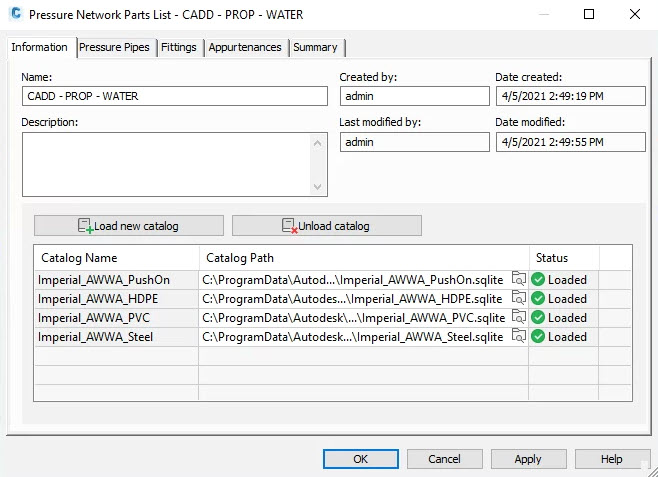 Multiple Pressure Catalogs Loaded into a Parts List
Multiple Pressure Catalogs Loaded into a Parts List
